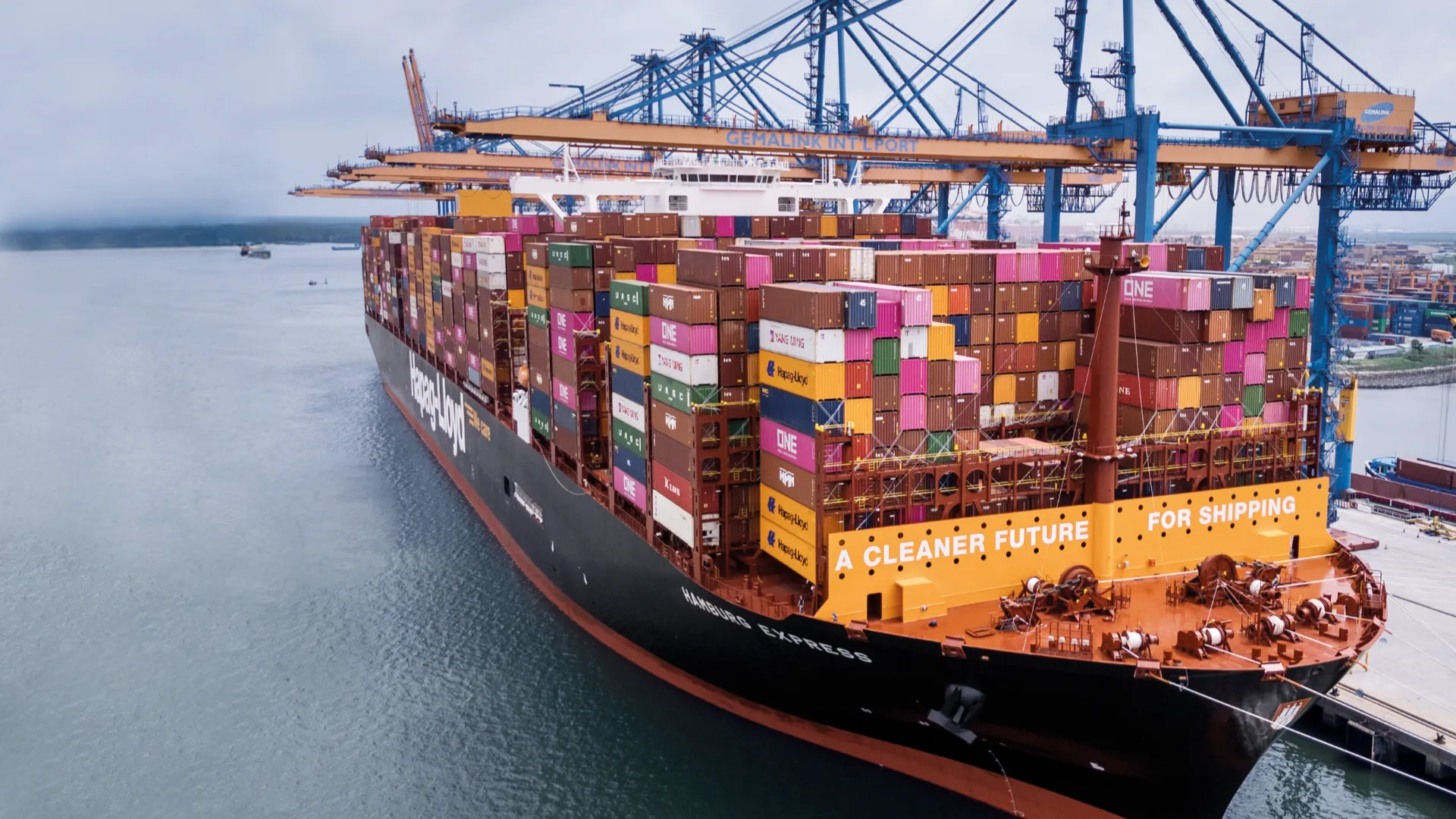By loading the video you agree to YouTube's privacy policy.
Ansgar Lehmkoester, Chief Engineer of the largest container vessel ever to sail under the German flag, says that he’s pleased after the first two months at sea aboard the Hamburg Express – and not just because of its size. The Hamburg Express is running on a dual-fuel methane engine that can significantly reduce greenhouse gas (GHG) emissions compared to traditional marine fuels. “The engine is reliable in both fuel and gas modes,” says Lehmkoester, who took the vessel on its maiden journey from the Hanwha Ocean Shipyard in Okpo, South Korea, to the Port of Hamburg, Germany, for christening.
--preparation-for-kieling-ceremony---shifting-block-on-position.webp?sfvrsn=2dba26b6_5)
The Hamburg Express is the seventh in a series of 12 newbuilds being constructed for Hapag-Lloyd, 400-meters long and boasting a capacity of 23,660 twenty-foot equivalent units (TEUs). And like all the vessels in the series, the newbuild features dual-fuel technology that already reduces carbon dioxide (CO2) emissions up to 20 percent and significantly cuts sulfur oxide (SOx) emissions and soot by running on LNG.
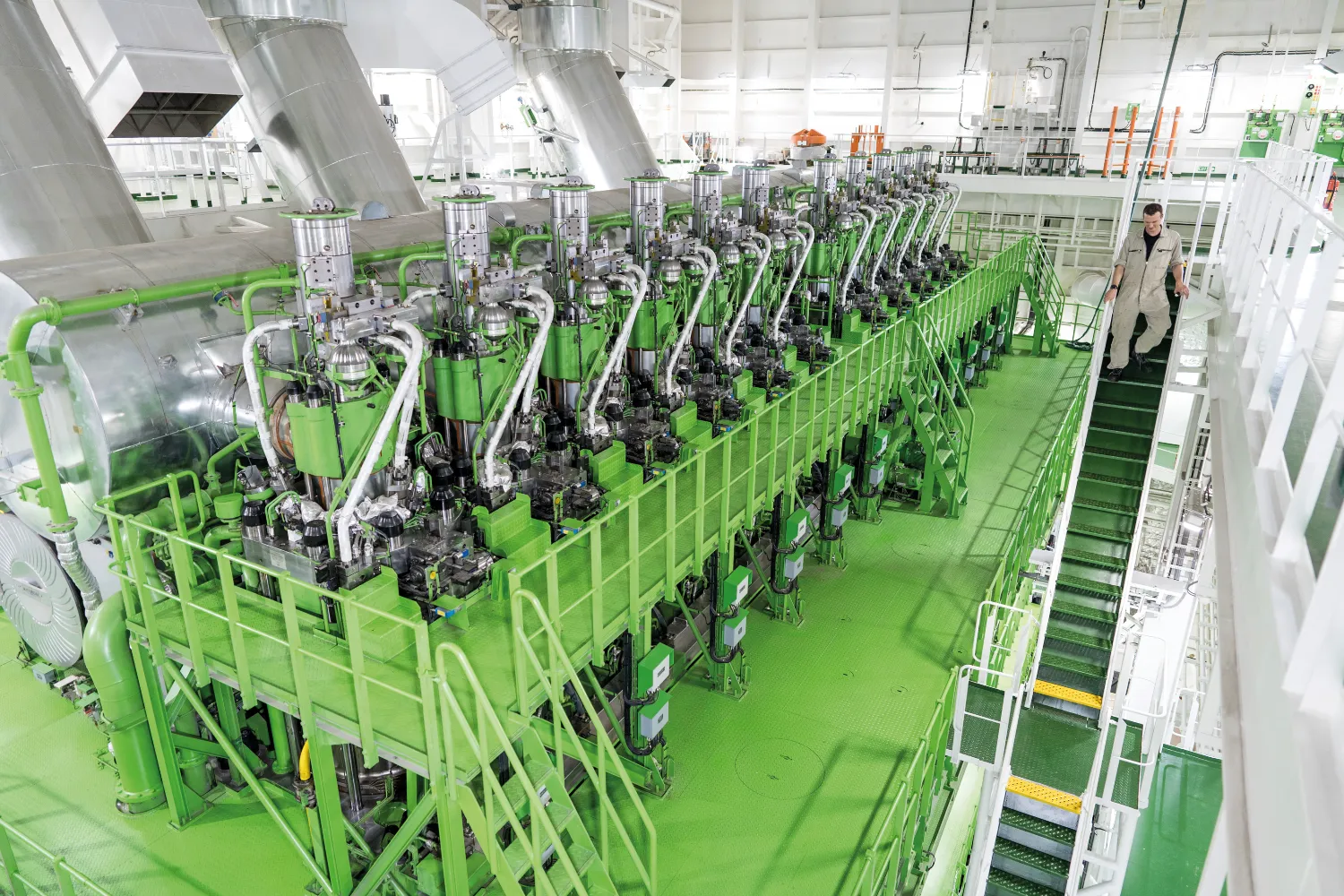
Lehmkoester leads us to the engine room near the stern of the ship where the Everllence B&W 11G95ME-GI engine is housed in a hall, so large it spans five decks. “The switch from oil to gas mode is a complex process involving many components,” says Lehmkoester, “but it works seamlessly. And the engine has features that allow us to cut out a single cylinder in gas mode, which futher enhances our operational flexibility.”
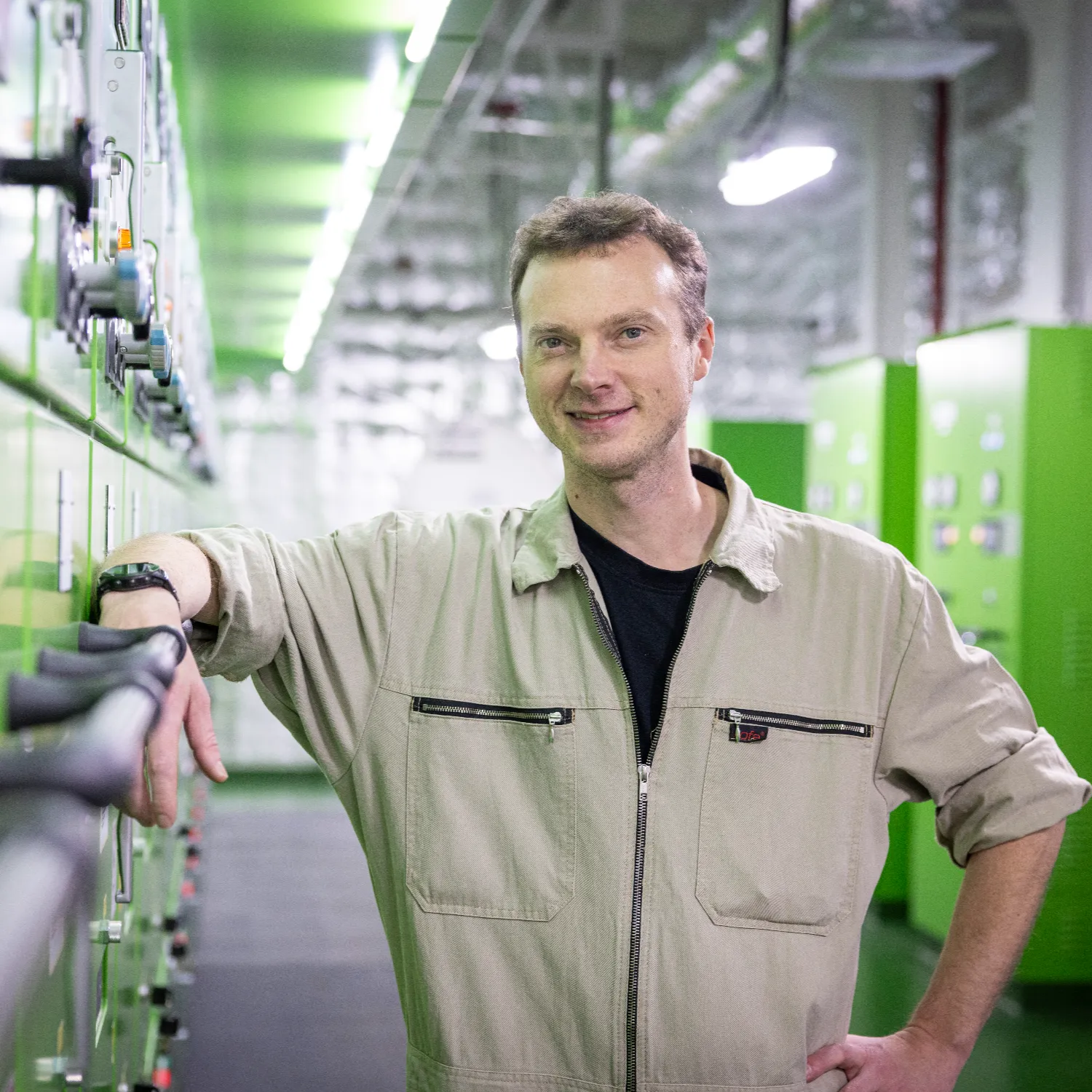
“The switch from oil to gas mode is a complex process involving many components, but it works seamlessly.”
Ansgar Lehmkoester, Chief Engineer of the Hamburg Express
More efficiency, fewer emissions and a negligible methane slip
Lars Voss, Hapag-Lloyd’s superintendent, is a seasoned mariner who began his career sailing on Hapag-Lloyd vessels in the 1980s. He is convinced that his company made the right decision in choosing Everllence’s dual-fuel engines for its Hamburg Express-class ships. “We opted for these engines because Everllence managed to maintain the diesel principle in gas mode, which means higher efficiency compared to competitors,” says Voss. He explains it in practical terms: “A ton of LNG costs around 500 US dollars. Now if you use 100 tons a day, and the fuel consumption of the Everllence B&W ME-GI engine is up to 15 to 20 percent less than its competitors’—after half a year, the initial higher investment in the engine is already paid off.”
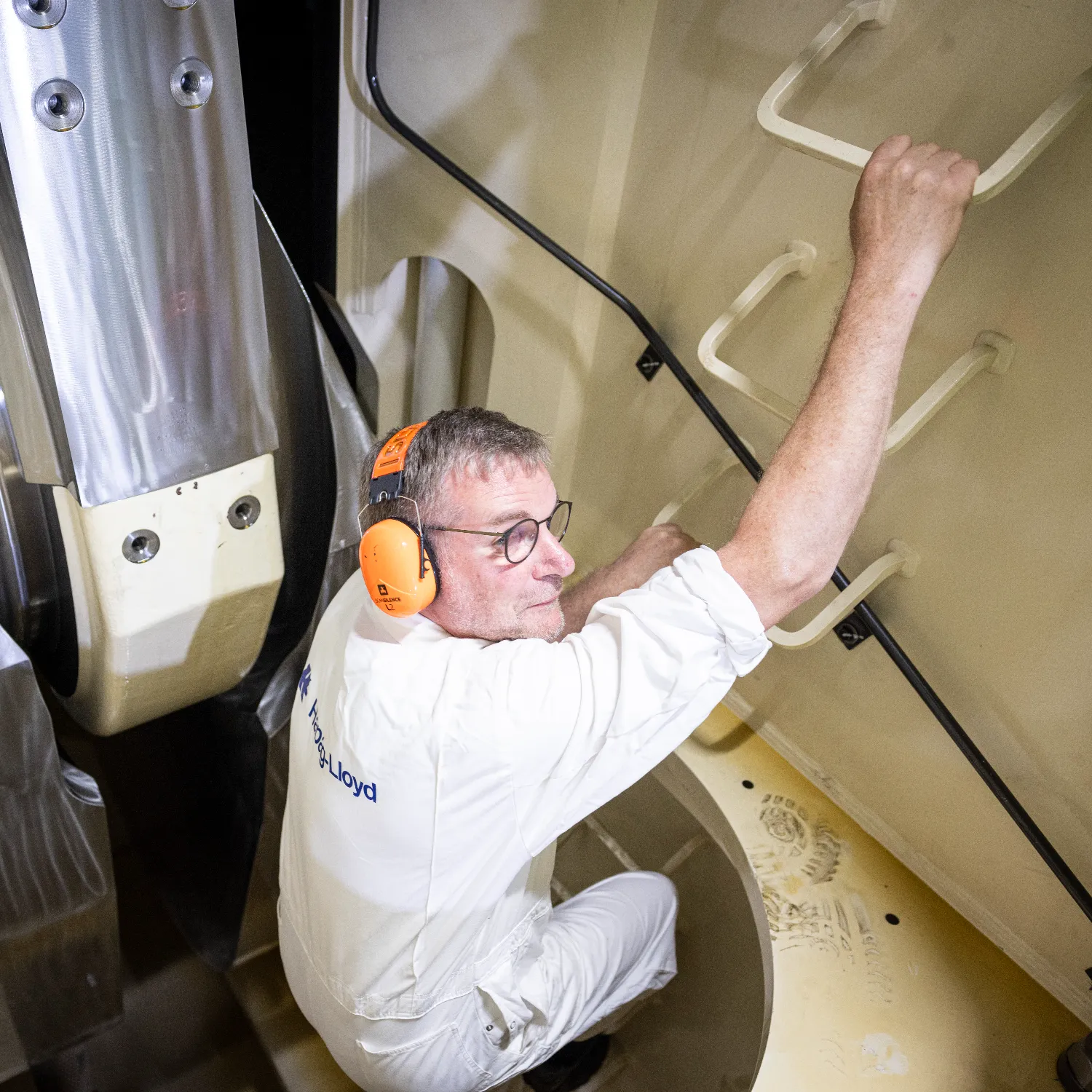
“Because the ME-GI engine consumes 15 to 20 percent less fuel than other engines, its investment costs are paid off in half a year”
Lars Voss, Superintendent of Hapag-Lloyd
Higher efficiency also means fewer emissions, which contributes to Hapag-Lloyd’s goal of achieving climate neutrality by 2045. On the Hamburg Express, along with reducing CO2 emissions, carbon black and sulfur dioxide emissions are reduced by 95 percent. Additionally, technological advancements have made methane-slip from the engine negligible, with a guaranteed maximum of 0.2 grams per kilowatt-hour.
In practical terms, as Everllence’s CEO Uwe Lauber confirms, this results in fewer residues in the engine, cleaner air coming out of the chimney, and less fine dust on the vessel. “This ME-GI engine is one of the most powerful engines you can have today in the world, with the lowest fuel oil consumption. And what’s even more important is the emission evaluation – with the ME-GI engine and our high-pressure technology system, we have the lowest methane slip which fits perfectly with our goal ‘Moving big things to zero’.
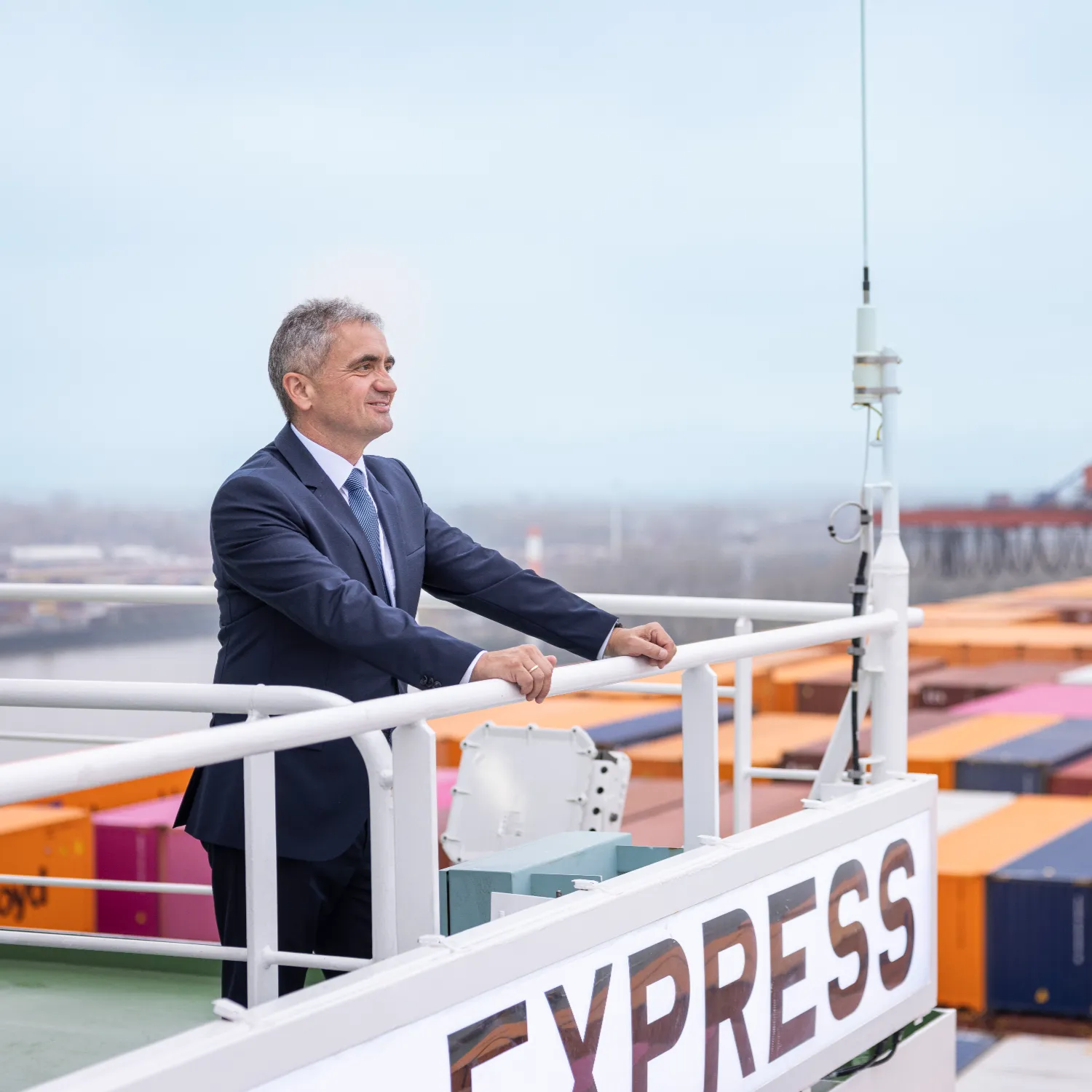
“The ME-GI engine is the most powerful engine you have today, with the lowest methane slip.”
Uwe Lauber, CEO of Everllence
Collaboration for the maritime energy transition
Voss takes us near the tank division of the vessel, located in the center of the Hamburg Express. The tank holds 18,600 cubic meters of LNG, enough for a complete Europe-China-Europe round trip. In addition, there is another tank for 8,000 tons of low-sulfur fuel oil.
Voss explains the challenges posed by dual-fuel technology: LNG, stored at -162°C, must be warmed to 45°C, and its pressure must be increased to 300 bar before it can be injected into the engine. All of this requires highly complex technological solutions. “But since 2021, when we installed the first ME-GI dual-fuel engine on our container ship Brussels Express, many issues have been resolved, and we could develop the dual-fuel technology together,” says Voss. “It started with the electronic control engine, and now we’ve reached this gas-driven engine.”
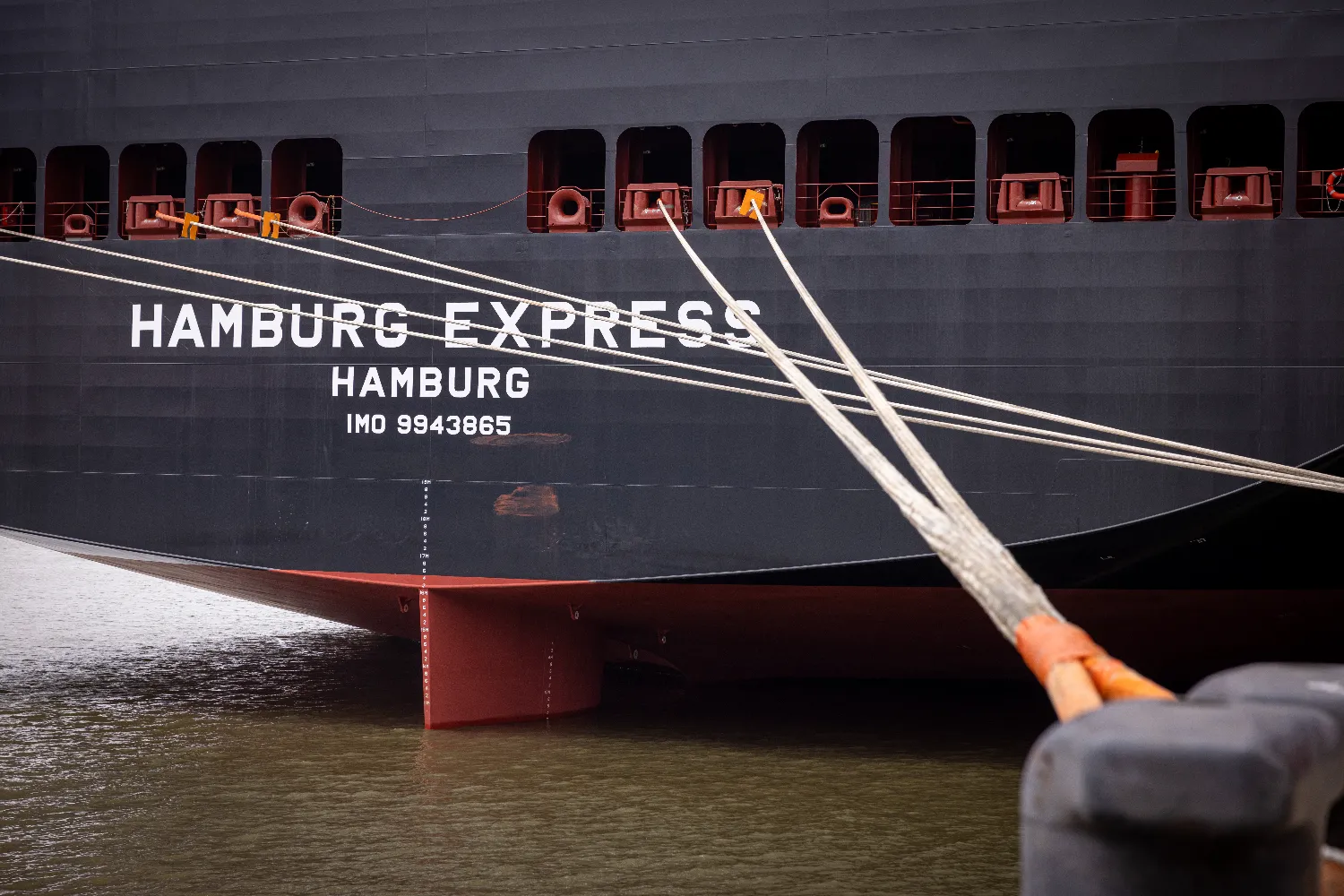
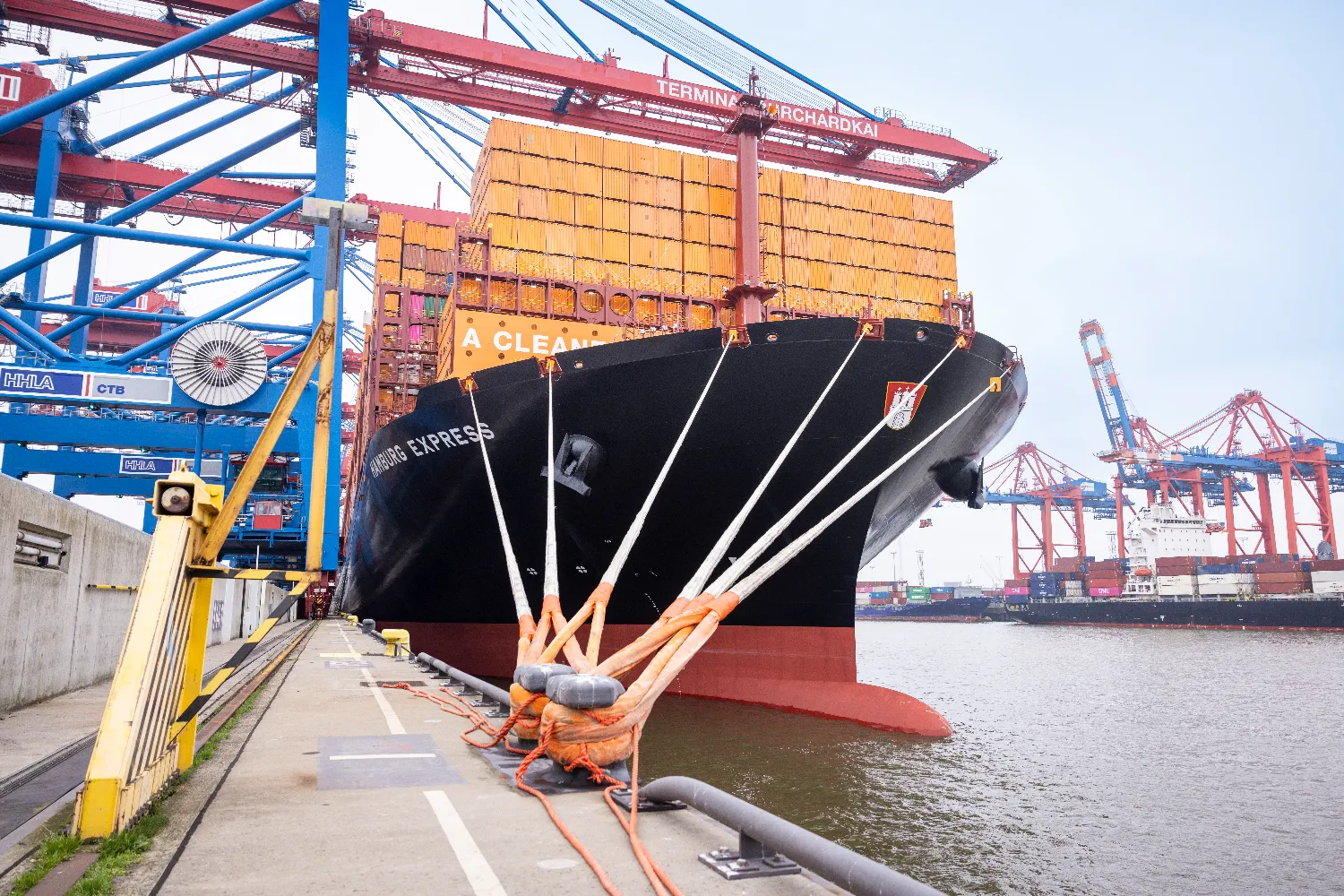
The collaboration with Hapag-Lloyd is excellent,” agrees Lauber, who traveled to Hamburg for the christening of the new ship. “We’ve signed a collaboration agreement on technology, where we will share knowledge – Hapag-Lloyd from their operational experience, and we from the technology side to further develop our propulsion systems.”
of CO2 emissions can be saved by running on LNG
of SOx emissions are reduced by running on LNG
“Shipping needs to address emissions now”
Lauber is convinced that the dual-fuel engines offered by Everllence are the ideal option for shipowners at the moment, considering fuel availability. “The shipping industry needs to address emissions right now, and methane is available. By using methane as an alternative fuel, you have the option to reduce CO2 emissions up to 20 percent, which represents a significant step forward.”
Hapag-Lloyd is following a mixed-methods approach, converting five of its vessels to dual-fuel methanol engines while primarily relying on LNG. However, Lars Voss agrees with Uwe Lauber: “Rotterdam, Singapore, and China are locations where the vessels regularly bunker LNG without any issues of availability. But only by transitioning to synthetic methane over time will methane be a fuel for the future.”
The issue of availability of synthetic fuels remains an open question, one over which shipping companies have little influence. However, Everllence’s dual-fuel engines offer flexibility. “A ship should be in operation for 25 years or even longer. And with a dual-fuel engine like the one on the Hamburg Express, you still have the option to convert,” says Uwe Lauber. “So, the future is open.”
About the author
Berlin-based journalist Moritz Gathmann reports as a correspondent from various regions of Europe for German publications. His work has appeared in DER SPIEGEL, Frankfurter Allgemeine Zeitung, and other media.
